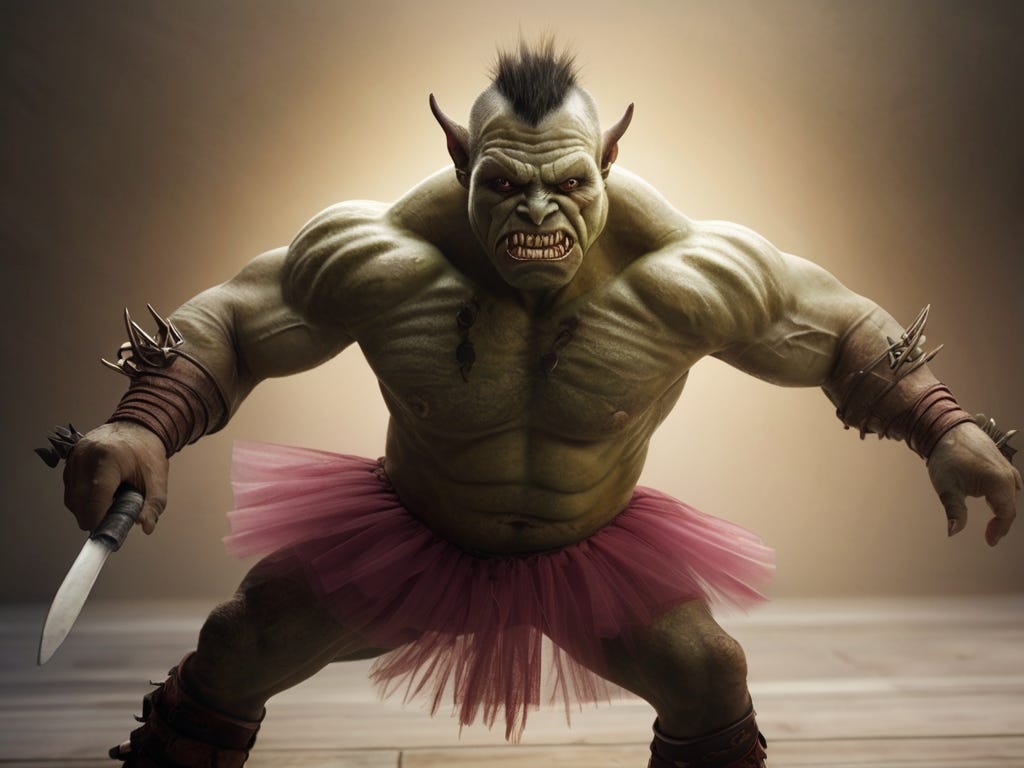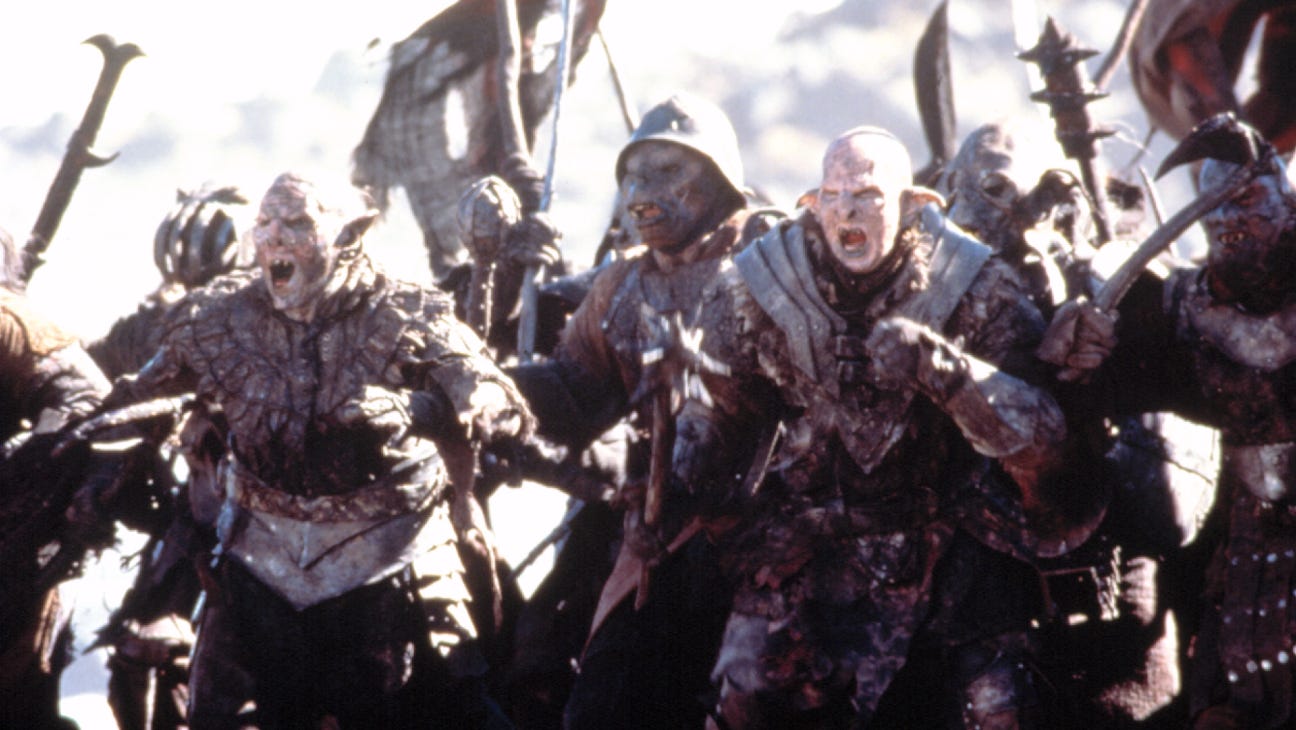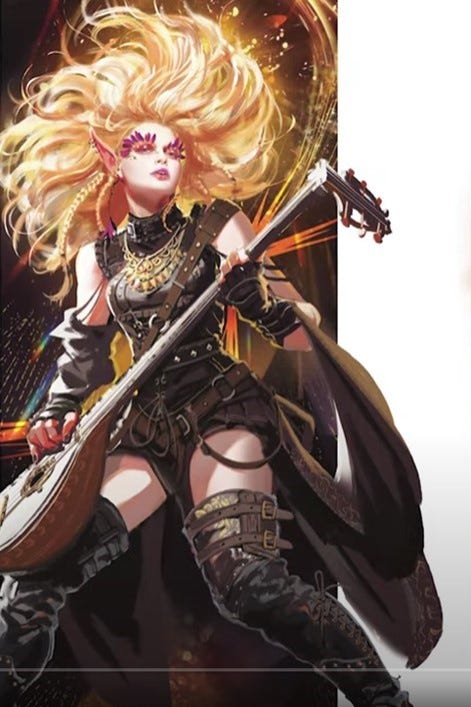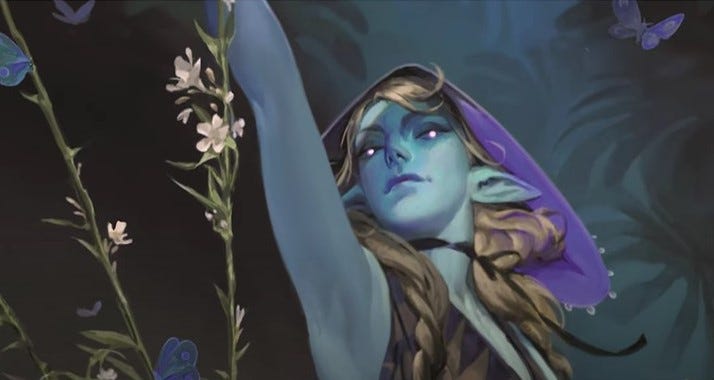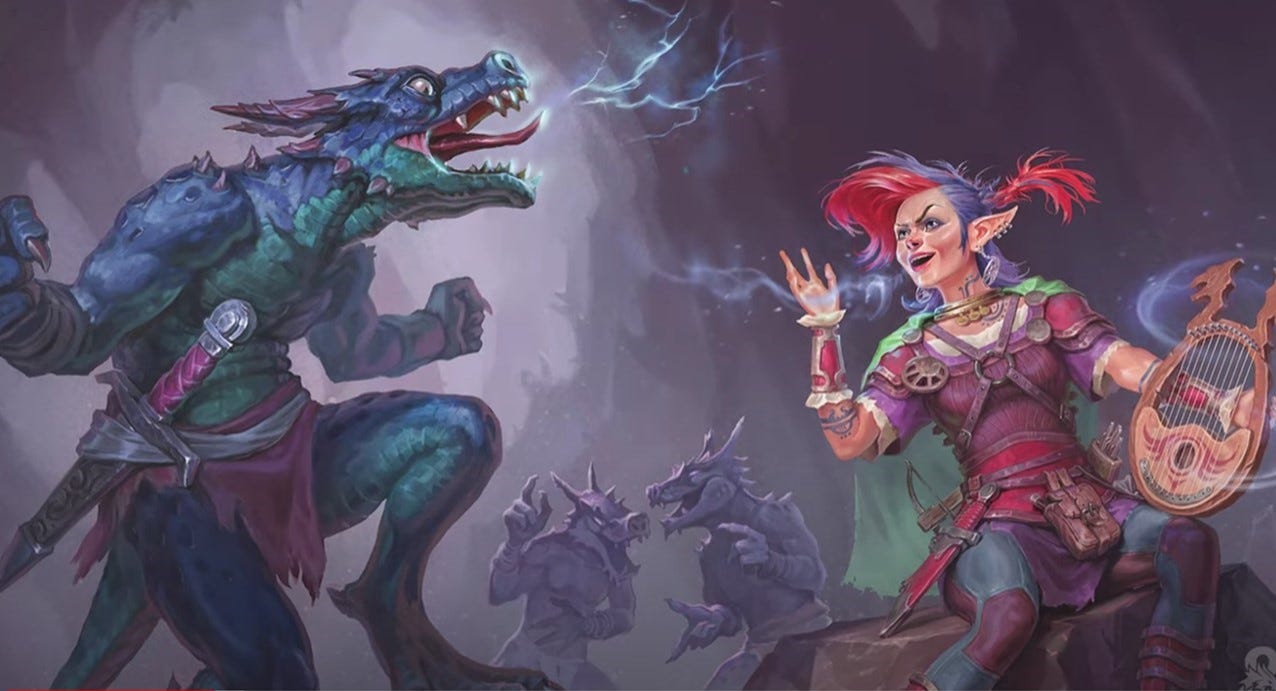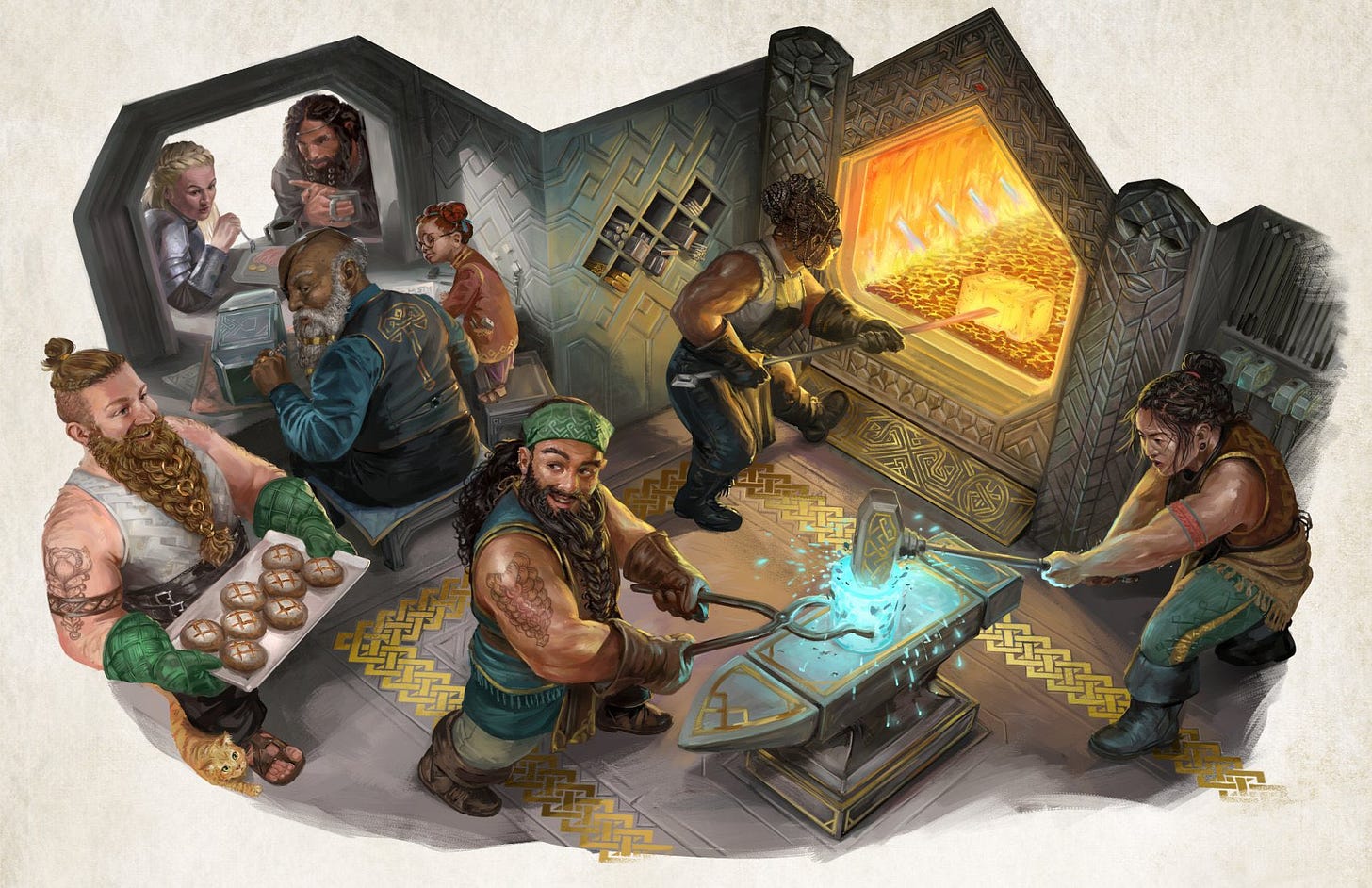OneD&D…Dungeons and Dragons’ next edition/not edition1 is around the corner and they’ve released some teaser material and artwork from the forthcoming Player’s Handbook (PHB). Predictably, it’s generating a lot of strong feelings among tabletop gamers. There’s been a lot of tension in the gaming community over multiple issues, including the cultural/political direction that Wizards is taking the game. The new artwork has provided strong clues for what lies in store for D&D.
Not surprisingly, what got the most attention was a depiction of orcs. Orcs, for the uninitiated, are the bad guys in Lord of the Rings. Thus, through most previous D&D editions, they’ve been portrayed as inherently evil, as in the movies. Having some clear bad guys tends to work well for a game built around killing monsters to become heroes. Beasts and leviathans terrorizing a town of civilians…heroes to the rescue kind of thing. There’s been an ongoing controversy about whether having inherently evil orcs is related to racism in real life. The available evidence says no, and that most people, including people of color, don’t care about this issue. But moral panics rarely care about evidence and the makers of D&D seem to have been seduced by the siren song of a minority of loud, angry, online activists in search of moral purity.
In a recent study, I found that images of orcs in previous D&D editions did not rely on racial stereotypes. Thus, I was surprised to see the new PHB depict orcs as a weird kind of mashup of a university gender studies class and Mexican rancheros. For a new product presumably the result of a neurotic obsessiveness with race that focused specifically on orcs (“Look, orcs can be good guys now!”), to pull from Mexican stereotypes seems like a remarkable own-goal2.
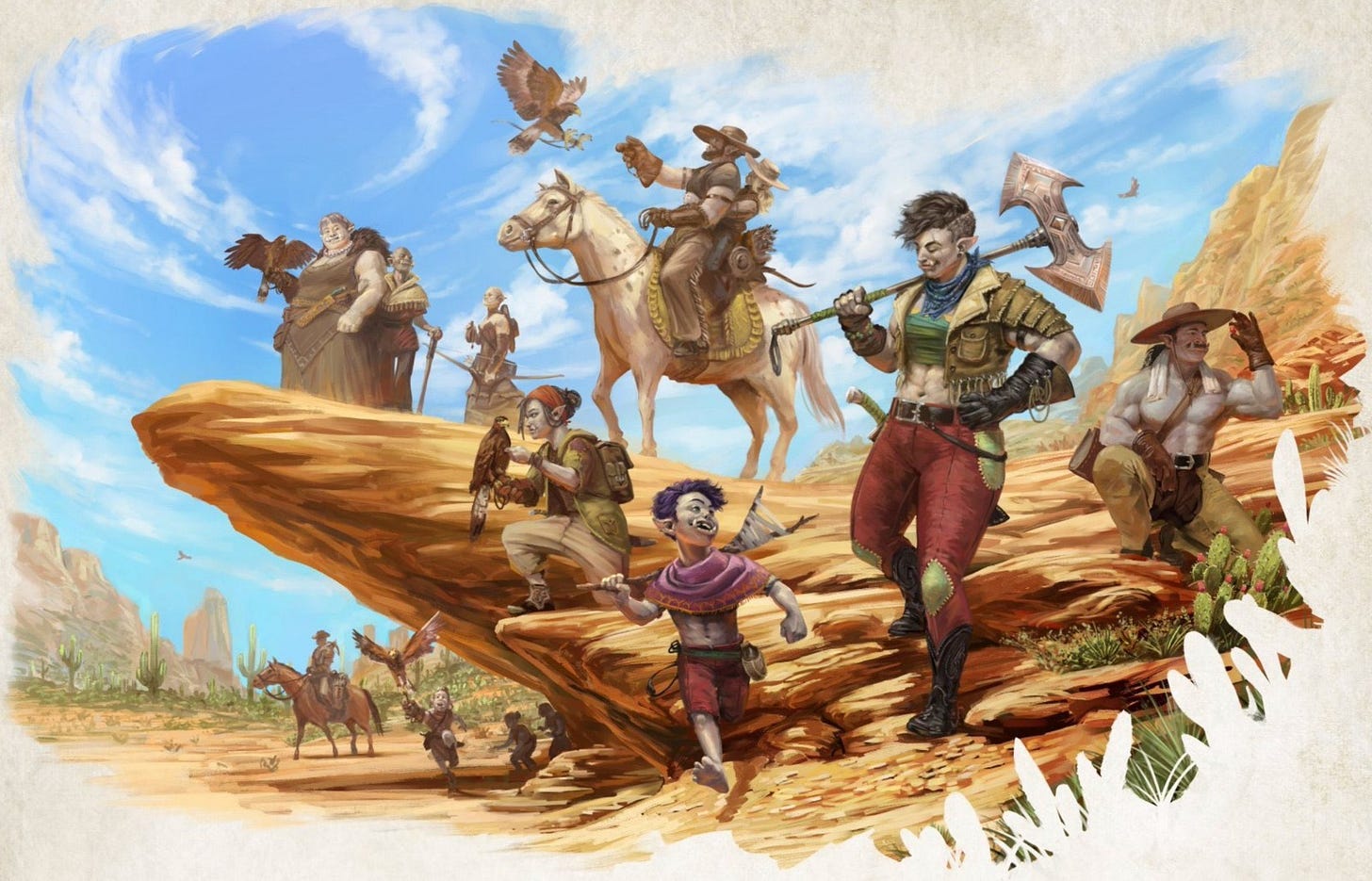
In fairness, the stereotypes aren’t necessarily bad. It’s not like they presented orcs as drunken Irish, beating their wives, surrounded by their 22 kids3. But they are stereotypes. It can be cool to explore other cultures in roleplaying and, sure, it’s probably hard to do that without some stereotyping (“we’re going to do Oriental Adventures but with no ninjas, samurai or Buddhist references, and it’s going to look they’re all in Medieval France”). But that they chose orcs of all races to portray with race stereotypes, given the controversy swirling around orcs, seems remarkably…unstrategic.
Granted they mix the Mexican stereotypes in with a whole bunch of body-positive, gender-ambiguous, purple-haired anachronisms that tend to be the obsession of the loudest GenZ voices but make D&D feel more like a campus protest than a wargame rooted in the historical past or classic fantasy literature. Even the side-shaved haircut of the orc with the battle-axe in the front reminds me more of a sociology professor than Lord of the Rings. I’m not sure this is an exciting direction for orcs or the game.
Now, one might argue that’s just one picture. But much of the other artwork seemed to reinforce this general feel. For one thing, there were a lot of presumably player characters with pastel colored skin…blues, pinks, purples and greens. That’s atypical for a game where most races were human, elven, dwarven and such…races generally depicted as having similar skin tones as historical humans. Instead, the PHB feels as if we’re playing in the Easter Bunny’s fantasy realm.
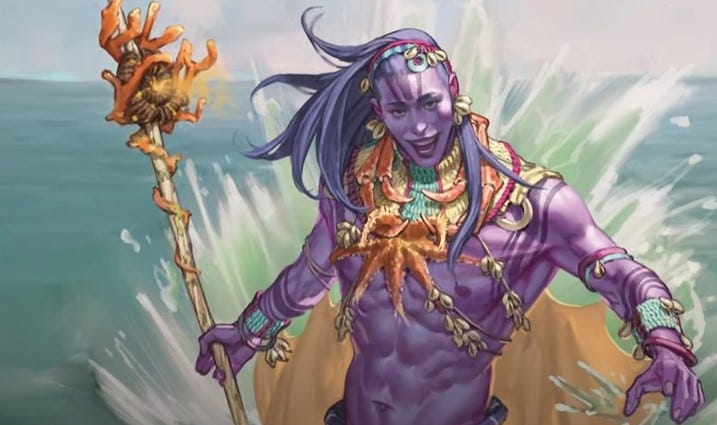
Also, a good number of the images were utopian, featuring happy I dare say empowered individuals (in the sense of modern academic parlance, not leveling-up sense). You can almost picture them drinking chai tea and practicing mindfulness. “Behold! I am Beorn Warhammer, and I am present in this moment to embody balance and realign your chakras.”
Even the combat scenes lack any real tension. The orc scene itself is pastoral…they’re the happiest orcs I’ve ever witnessed. Particularly that purple scamp in the foreground who looks like he’s on first day of summer vacation, not questing against some horrible menace.
The problem is that utopian fiction tends to fail. Tension, the fight of good versus evil, the darkness, is all what made D&D appeal to our natural desire to be heroic. The new artwork appears to delight far more in the mundane, pseudo-feminist tropes of cooperation, the endless joy of an inclusive crime-and-violence free fantasy society. The new edition’s characters take a kind of Zoloft-drenched Brave New World satisfaction in doing chores and loving one another without the slightest hint of all-to-human complaint, self-doubt, or prejudice. Yawn.
It all feels so…safe (in the neurotic 2020 version of that word). Safetism seemed at play already with the latter 5e products…Radiant Citadel in particular seemed a mecca of anachronistic social justice thinking…a realm of restorative justice and defunded police.
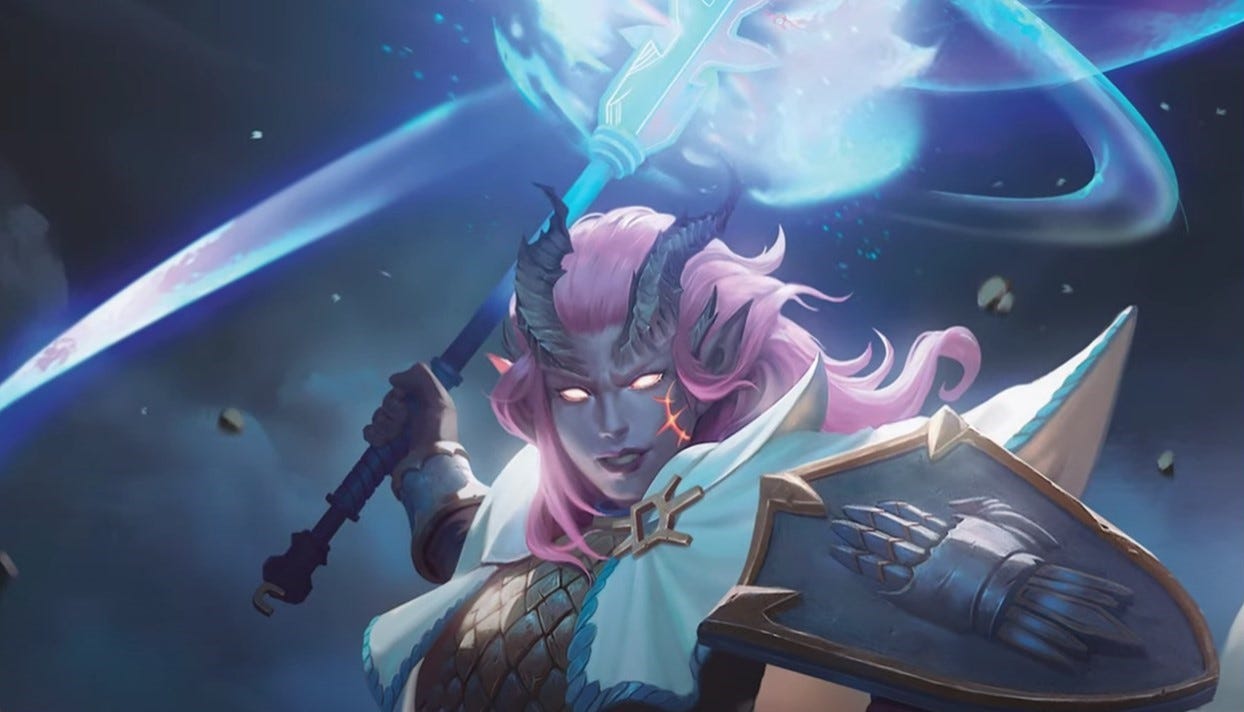
Sometimes identity appears to be used by Wizards as a shield for mediocre creativity. Another picture to create controversy is one of a group of dwarves in some kind of weird forge/food truck combination4. Never mind the anachronistic hipster manbuns, the dwarves look like they are in some kind of ketamine-induced euphoria. Much of the outcry over this picture is undoubtedly due to the observation that the two male dwarves in the foreground are obviously gay.
I’d be naïve to think none of the grumbling is due to homophobia and that sucks. But this picture makes it easy. I’ve had plenty of players play gay, trans, and nonbinary characters at my table and their stories can be wonderful. But this picture is a missed opportunity. Imagine instead, two brothers-in-arms standing back-to-back, defending each other to the death against an impossible, evil horde5, their tenderness communicated with just the slightest, desperate touch. Epic. There’s plenty of material from, say, Greek mythos to incorporate themes of sexual diversity within D&D while maintaining it’s gritty heroism. Instead, the gay dwarves are…baking? And Wizards hits us over the head with their sexuality with goofy cross-matched beard tattoos. It’s like they’re daring people to criticize the cringe of the picture, lest the critic be labeled homophobic.
To be fair, a few of the pictures do retain some of the thrill of earlier editions of D&D. The beholder battle picture on the Monster Manual cover looks epic, and the image of three evil masterminds commanding an army of skeletons for the Dungeon Master’s Guide cover is great. But most of the images look like something phoned in…technically, as art they are fine, but they feel almost more like some kind of scifi dreamland than medieval fantasy wargaming.
I think ClownfishTV summed this up nicely, even aside from their comedic outrage, in asking who this new edition (and I think we can safely call it a new edition at this point) is for. Given the 2020 race panic, I think Wizards were put in an uncomfortable spot. There appear to be at least 3 main cohorts of players.
First, the old timers (like me) who’ve been a core audience across multiple editions, but who may also be getting frustrated with changes in the game’s feel as old people tend to do. Sure, we’re getting wizened and crusty and waving our canes at kids today with their music and hair. I’m sensitive to that. Though I think plenty of young but enthused players fit into this category as well.
Second, casual players who pick up the game for a bit, perhaps buy the PHB, but then give it up after a couple of years. Of course, it’s nice to convert casual players to core players when one can. Still, casual players make up a big group and can drop a lot of coin collectively, which explains why the core rulebooks are always heavy sellers. This group are probably the least interested in politics, at least as far as the game is concerned, and may be turned on or off by the simplicity or complexity of the mechanics.
Third are what ClownfishTV alternatively refers to the Tumblr or “theater kids” crowd. These highly “progressive6” kids like to obsess over race, sexuality, gender, and identity politics and are quick to complain and condemn. With this new artwork, it looks like D&D is trying to appeal mainly to this third group.
On one hand, I get the risk of depending too heavily on the core audience…after all we’re mostly getting older and are going to die eventually, even if we historically bought a lot of books. However, I’m not sure going with the “progressive” crowd is wise. I’m not sure they’re as motivated to play D&D as they are to complain about it, and I suspect the goalposts will simply keep moving. By definition, they’re an activist set and activists don’t stop being outraged. As for the casuals, the sense of a split in the D&D community may itself be off-putting and OneD&D appears to be adding complexity to 5.75e…not usually a great recipe for attracting and retaining new players.
I do sympathize that it would have been a trick to placate all three groups. I think it could have been done…certainly with more finesse than this outcome, but there could have been some needle threading. Alas! Nope.
It’s unfortunate, as I think OneD&D does have some good ideas. The weapon mastery seems interesting, and I like the idea of a level 1 feat (although 5e’s glaring problem of connecting feats to ability score increases appears to be unaddressed). I’m not as sure emphasizing backstory so much instead of race is great, and I’m a bit worried backstories may actually become cookie-cutter, rather than thought out for role-playing purposes.
But I no longer believe that OneD&D will be backwards compatible with 5e as Wizards of the Coast seemed to promise earlier. The new classes appear to be given significant power bumps, particularly at the lower levels. Given the confusion over whether OneD&D is a new edition or not, I think we may have a similar circumstance as with 4e/Essentials, which sowed much chaos into that edition.
Alas…the proof will be in the pudding as they say…in this case in sales. The core rulebooks usually sell like gangbusters. I’d be curious how these new rulebooks do. The rollout has been one of the clumsiest edition rollouts I’ve witnessed, and buzz feels minimal. And now there are not just complaints about mechanics, but (as with 4e) whether the game even feels like D&D anymore. Unfortunately, tracking sales data for D&D books can be difficult. There was some evidence that the later 5e books were fizzling out, and D&D hasn’t seemed healthy, with a massive layoff late in 2023. But who knows…maybe they know what they’re doing, and this new edition will be a rollicking success.
In the meantime, I won’t be spending a dime on it. I hope that the reaction from the gaming community will force a course correction for D&D but if not, I’ll continue to enjoy classic 5e or perhaps explore other systems. Happy gaming!
Wizards of the Coast’s complete inability to be clear about whether this is a new edition or half-edition or not has been part of their PR problem in my opinion. Judging from what I’m seeing from the new character classes, the changes are bigger than what we saw with 3.5. I’d put this as a 5.75…built along much of the same system, but in no way backwards compatible with existing PCs.
As ever, I reproduce pictures here in a manner I believe compatible with Fair Use Doctrine. These are partial works from the sources, I am making no profit from them, not taking profit away from Wizards.
I figure it’s ok to make fun of stereotypes of my own ethnic groups. Don’t like it? Subscribe to a different substack.
I’d imagine the local restaurant inspector would have something about that. Getting iron from you food is one thing, but this is ridiculous.
Maybe, say, orcs!
I put this term in air quotes as I think it’s a misnomer. The identity-based obsessiveness, hectoring, and bullying of today, with it’s anti-Semitism and blatant racism, bears no resemblance to the progressivism with which I identify.




